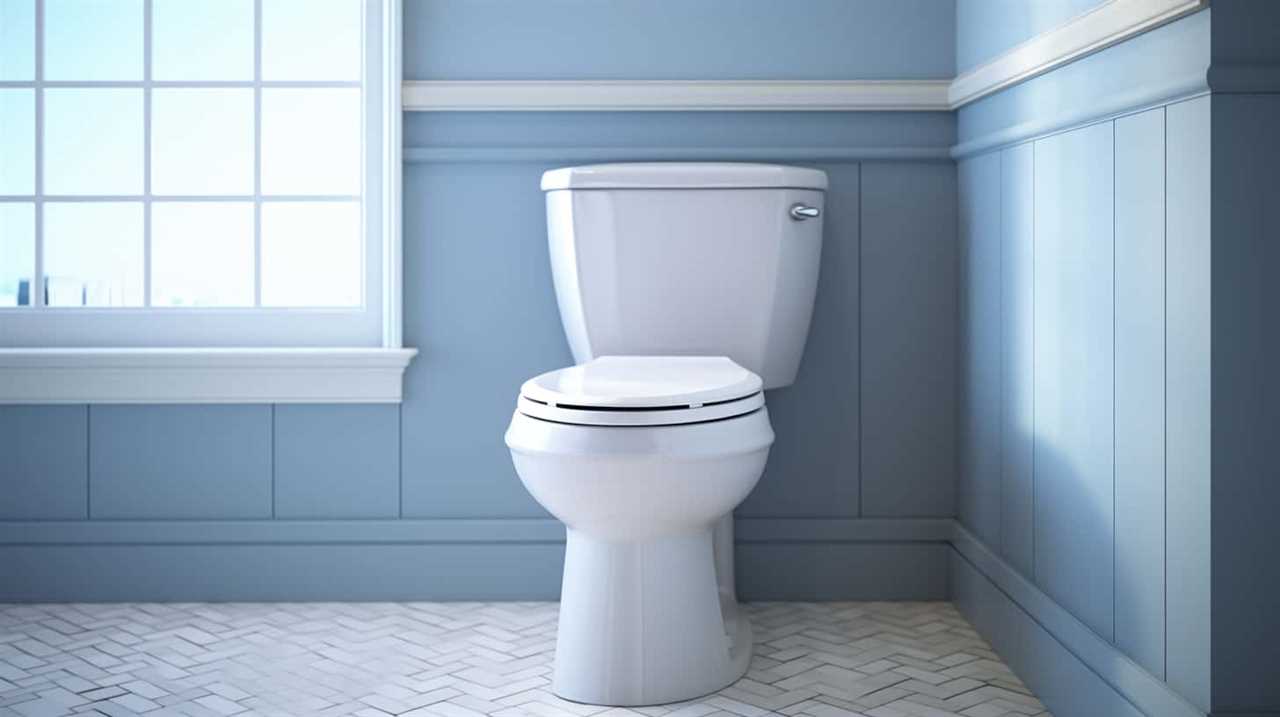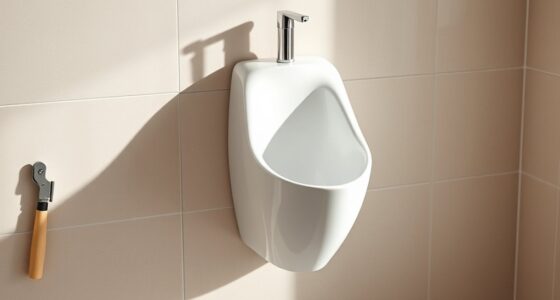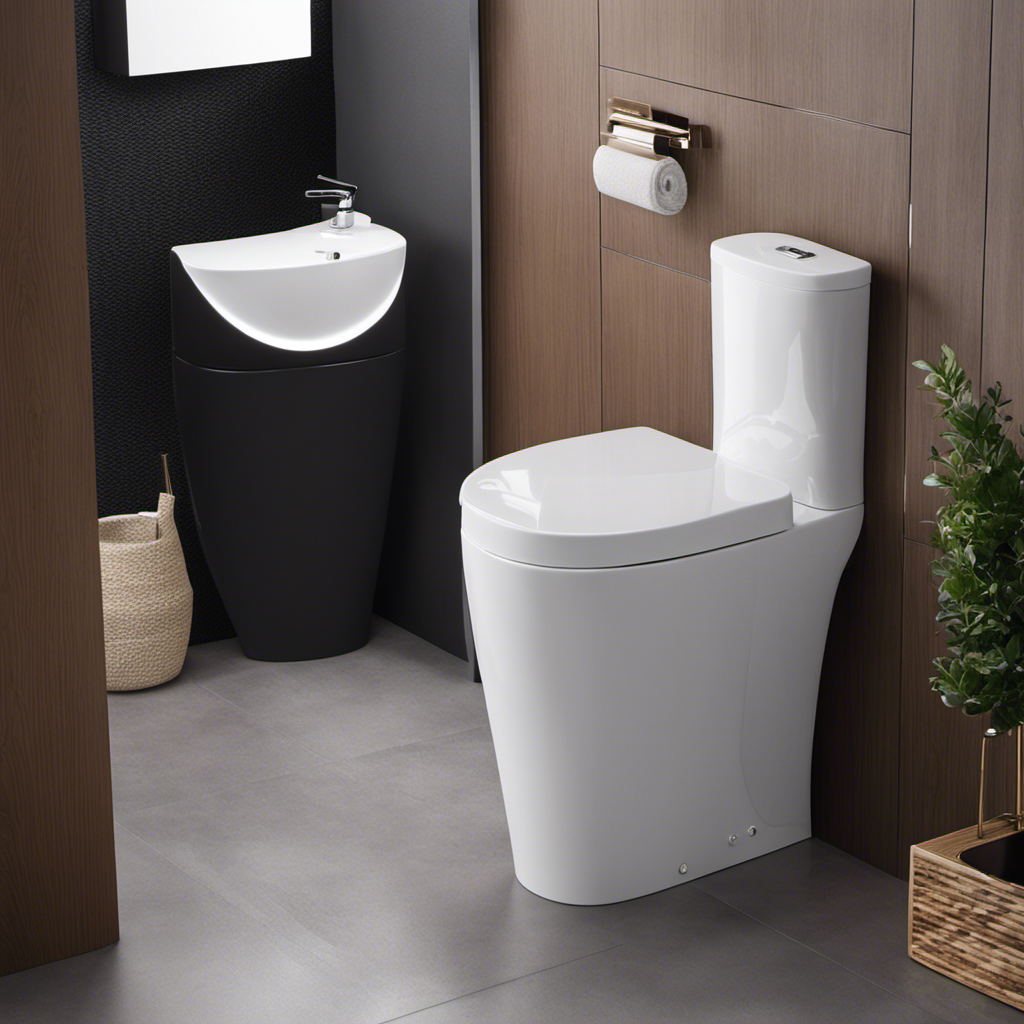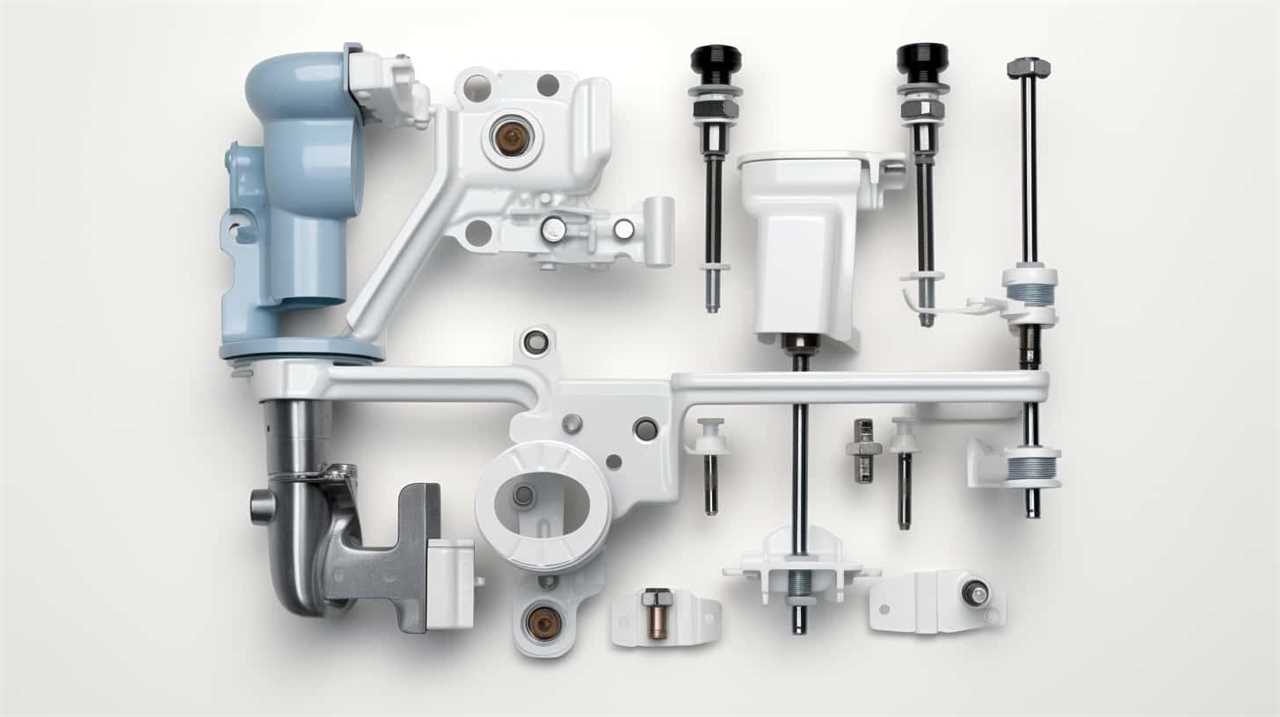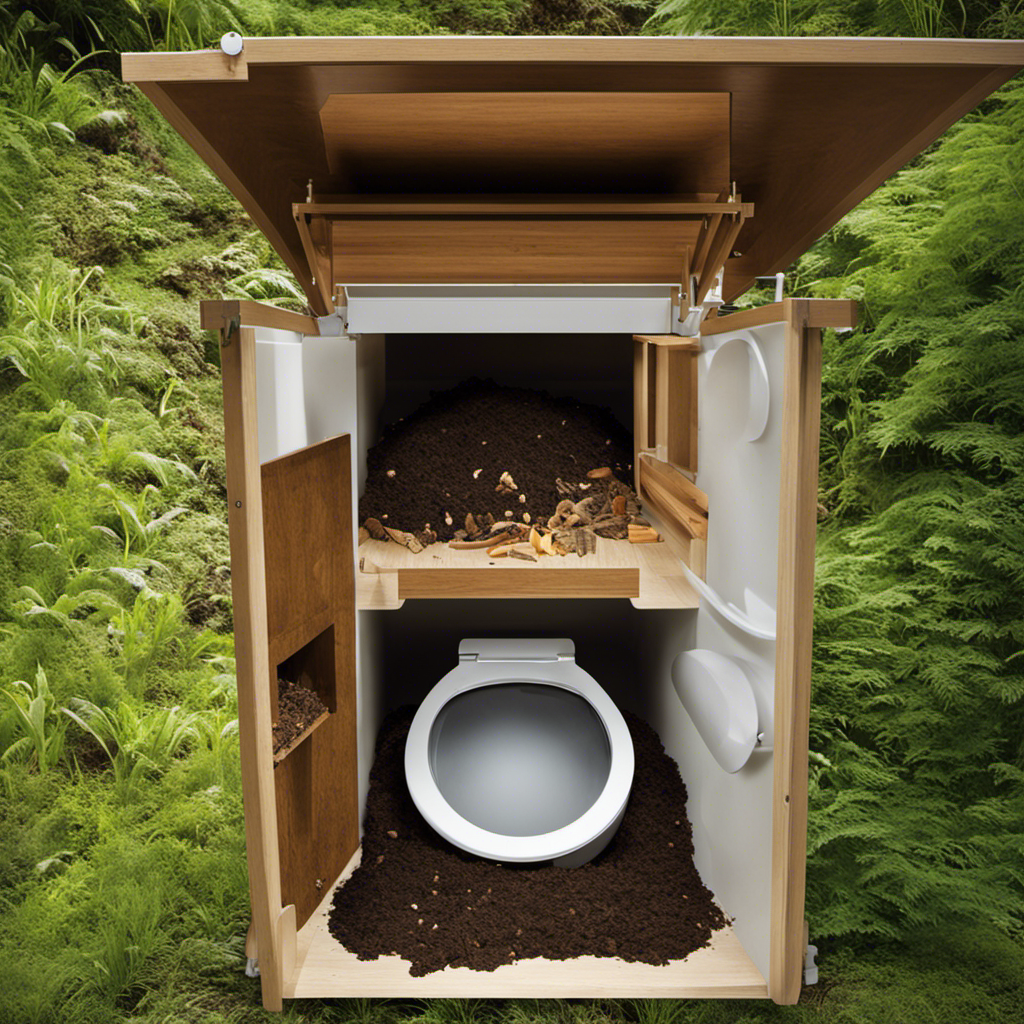Have you ever wondered why your toilet flush lacks power? We’ve got the answers you’re looking for.
In this article, we’ll explore the common reasons behind a weak toilet flush. From a clogged drain to a faulty flapper valve, low water pressure to a blocked vent pipe, and even a malfunctioning flush mechanism, we’ll delve into the technical details and provide concise explanations.
Stay tuned to master the art of troubleshooting your toilet flush!
Key Takeaways
- Clogged toilet drain and faulty flapper valve are common causes of power loss in toilet flush.
- Solutions for clogged toilet drain include using a plunger, toilet auger, or chemical drain cleaner, and calling a professional plumber for severe clogs.
- Troubleshooting the flapper valve involves checking alignment, cleaning or replacing the flapper, and considering upgrading to a dual-flush system.
- Low water pressure can be addressed by checking other faucets, removing flow restrictors, cleaning or replacing aerators or showerheads, and installing a pressure booster pump if necessary.
Clogged Toilet Drain
When we encounter a clogged toilet drain, it’s crucial to address the issue promptly to restore proper flushing power. A clog in the toilet drain can lead to a variety of problems, including toilet overflow and a weakened flush.

The toilet tank plays a significant role in the flushing process, as it holds the water that’s released during a flush. If the drain is clogged, the water can’t flow freely, causing it to back up and potentially overflow.
To resolve this issue, it’s important to identify the cause of the clog, which can range from a buildup of toilet paper to foreign objects. Using a plunger or a toilet auger can often clear the clog and restore the toilet’s flushing power.
Regular maintenance and proper disposal of waste materials can help prevent future clogs and ensure optimal performance of the toilet drain.
Faulty Flapper Valve
To continue addressing the issue of a clogged toilet drain and its impact on flushing power, another potential culprit could be a faulty flapper valve. The flapper valve is a crucial component in the toilet tank that controls the flow of water during flushing. If the flapper valve isn’t functioning properly, it can result in a weak or incomplete flush.

Here are some common flapper valve problems to be aware of:
- Flapper valve not sealing properly, causing water leakage.
- Flapper valve getting stuck in the open or closed position.
- Flapper valve deteriorating over time, leading to leaks.
- Flapper valve chain being too loose or too tight, affecting the flush.
- Flapper valve not aligned properly with the flush valve seat.
If any of these issues occur, it may be necessary to consider flapper valve replacement. Addressing flapper valve problems can improve flushing power and prevent further damage.
Now, let’s move on to the next potential cause of a weak flush: low water pressure.
Low Water Pressure
One possible reason for a weak toilet flush could be due to a lack of sufficient water pressure in the plumbing system. Low water pressure can have various effects on household appliances, including toilets. When there isn’t enough pressure, the force needed to effectively flush the toilet is compromised, resulting in a weak flush.

To troubleshoot low water pressure issues, there are a few tips to consider. First, check the main water valve to ensure it’s fully open. Next, inspect the water supply line for any leaks or blockages. Additionally, check the pressure regulator and water pressure gauge to ensure they’re functioning properly.
Blocked Vent Pipe
To continue the discussion from the previous subtopic, a possible reason for a weak toilet flush is a blocked vent pipe in the plumbing system.
The vent pipe is an essential component of a plumbing system as it allows for proper ventilation and ensures the smooth flow of waste and water.
When the vent pipe is blocked, it can lead to a decrease in air pressure, causing a weak flush in the toilet.

It’s crucial to maintain the vent pipe to prevent blockages and ensure proper ventilation in the plumbing system.
Here are some key points to consider regarding vent pipe maintenance and the importance of proper ventilation in plumbing systems:
- Regular inspection of the vent pipe to identify any blockages or obstructions.
- Clearing any debris or buildup in the vent pipe to maintain optimal airflow.
- Ensuring that the vent pipe is properly installed and positioned to facilitate efficient ventilation.
- Properly sealing any joints or connections in the vent pipe to prevent leaks and potential blockages.
- Understanding the role of the vent pipe in preventing sewer gas buildup and maintaining a healthy plumbing system.
Malfunctioning Flush Mechanism
A malfunction in the flush mechanism can greatly affect the power and efficiency of our toilet flush. One common issue is a problem with the toilet handle, which is responsible for initiating the flushing process. If the handle is loose or broken, it may not be able to generate enough force to properly activate the flush mechanism. Another potential problem is an incorrect chain length. The chain connects the toilet handle to the flapper, which controls the flow of water into the bowl. If the chain is too long or too short, it can disrupt the flushing process and result in a weak flush. To ensure optimal performance, it is important to regularly check and adjust the chain length, as well as promptly address any issues with the toilet handle.
| Flush Mechanism Issues | Causes | Solutions |
|---|---|---|
| Loose or broken toilet handle | – Wear and tear – Poor installation |
– Tighten or replace the handle – Seek professional help if needed |
| Incorrect chain length | – Incorrect adjustment – Chain damage |
– Adjust the chain length – Replace the chain if necessary |
Conclusion
In conclusion, several factors can contribute to a lack of power in your toilet flush. A clogged drain, faulty flapper valve, low water pressure, blocked vent pipe, or malfunctioning flush mechanism can all be potential culprits.

It’s important to identify and address the specific issue to restore the flush power. Remember, as they say, ‘Don’t flush your problems away, tackle them head-on for a smooth and powerful flush.’

